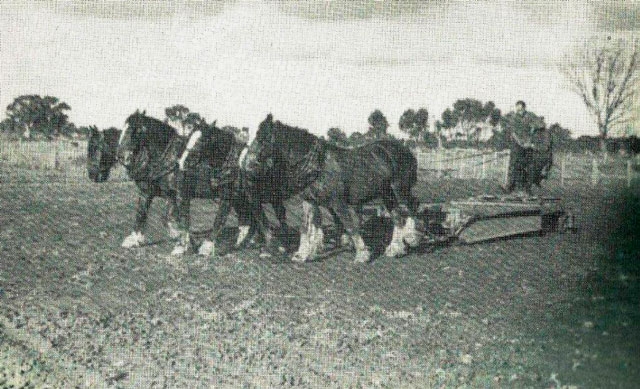Research on fruit trees began at Tatura 80 years ago. In this article we look at the early years, 1937 to 1957.
How it all began
The concept of a Horticultural Research Station was initiated in 1926, when fruit growers were concerned with poor production.
The then Superintendent of Horticulture reported that the Shepparton Irrigator’s Association had asked for an experimental orchard of deciduous pome and stone fruit trees to be established in the Goulburn Valley. Ten years later this concept was realised.
From 1926 to 1929, land from Oyen to Kyabram, Tatura, Shepparton, and Katandra to Kiewa was considered. Finally in 1929, State Government approved the recommendation of the Minister of Agriculture that the property of some 40 hectares (100 acres) at Tatura be purchased for £2,800 ($5,600) payable over 20 years.
The budget for the property was not available until 1936. Between 1929 and 1936, a detailed soil survey of the property was made, and the land was leased out for wheat and grazing.
The budget allocated in the 1936–1937 financial year was £997 ($1994). It was increased the following year to £1050 ($2100). The budget allowed the property to be fenced and cultivated, and four horses, a lorry and some hand tools were purchased. Wages had to be met from this budget.
Almost all cultivation in the early years had to be undertaken by contractors, or with horse-drawn equipment borrowed from neighbours—particularly the late Arthur Pickworth of Westlands orchard who was across the road from the station.
Research began in 1937
The first orchard of 3000 trees was planted in 1937.
Research began on irrigation and soil management of Golden Queen peach trees, and on fertiliser needed for irrigated peach and pear trees.
A program of breeding and selection of canning peach varieties began in 1937 when some 4000 seedlings and trees of a few cling peach varieties were planted.
Departmental staff from Melbourne under the leadership of Colin Cole, Horticultural Research Officer, planted the trees. These were the days of the 48-hour week, and starting at 7.30 a.m. in winter following a heavy frost, was not appreciated by the staff from Melbourne who were used to a heated office at that time of the day.
The only buildings on the Station at Tatura in these early years were an old weatherboard house occupied by the foreman, a very dilapidated stable, and a small nursery shed. A front room of the house served as an office, and the sleep-out or veranda housed the manager. Lighting consisted of kerosene lamps and candles.
Water for irrigation was pumped by a windmill from the nearby Wilson Channel and water for drinking came from a small rain-water tank attached to the house.
Equipment was limited to the bare essentials, and consisted of a lorry, a single furrow mouldboard plough, a set of harrows, a Furphy water-cart and some shovels, picks, hoes and small hand-tools.
Pesticides were sprayed with a knapsack or power-pump borrowed or hired from a neighbour.
Four Clydesdale horses were used to pull field equipment.
In 1941, a secondhand Fordson tractor was transferred to Tatura from the State Viticultural Nursery in Wahgunyah.
The windbreaks around the boundaries, and between the main experimental peach and pear orchards, were a feature of the Station for over 30 years. Lambertiana cypresses, Silver and Lombardy poplars, Turkey oaks and Basket willows were the main species planted from 1937 to 1946.
The war years: 1939 to 1945. (cont next month)
See this article in Tree Fruit Dec 2018






















